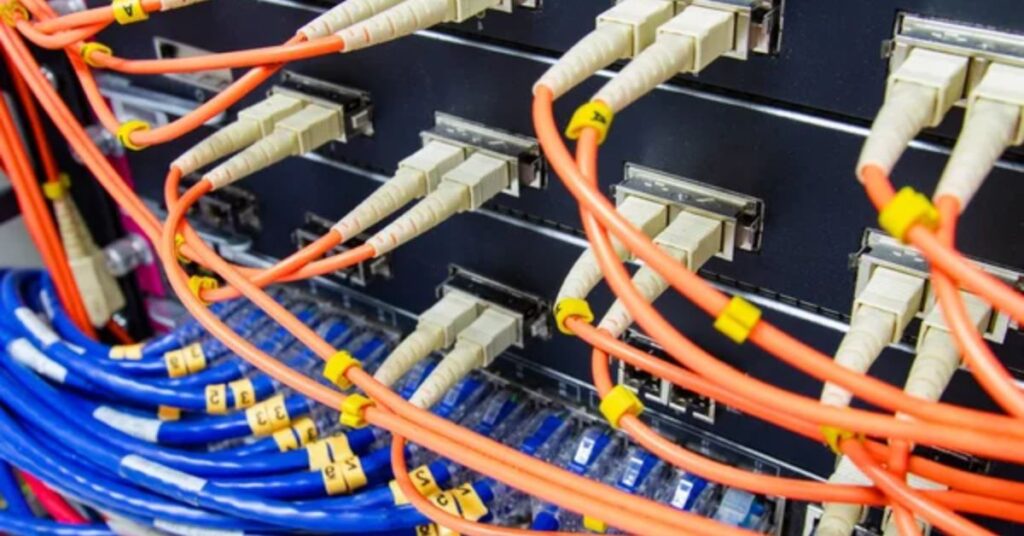In today’s hyper-connected world, every click, email, and video call depends on one thing — a strong network infrastructure. From small startups to large corporations, efficient data transfer keeps everything running smoothly. When a network slows down or fails, productivity suffers, communication breaks, and business operations come to a halt. That’s why understanding why network cabling matters for modern organizations is essential for any company that wants to stay competitive. The right cabling system doesn’t just connect devices; it forms the backbone of a company’s entire digital ecosystem.
Network cabling plays a silent yet powerful role in shaping how effectively an organization functions. Think about your office computers, servers, printers, and even conference room screens — they all rely on a seamless flow of data through structured cables. Whether you’re running cloud applications, managing remote teams, or using IoT devices, your cabling infrastructure ensures that data travels quickly, safely, and without interruptions. For U.S.-based organizations adopting new technologies every year, investing in quality cabling is not optional; it’s a necessity for long-term stability and growth.
Network Cabling Definition
To truly understand why network cabling matters for modern organizations, you first need to know what network cabling actually is. In simple terms, network cabling refers to the system of cables, connectors, and hardware that allows electronic devices to communicate with each other. It links computers, routers, switches, and servers within a local area network (LAN) or even across larger networks like a wide area network (WAN). Without structured cabling, there would be no reliable way to transmit data, voice, or video signals efficiently.
Network cabling serves as the foundation of modern communication. It ensures that digital information moves smoothly across departments, buildings, or even cities. In the U.S., most organizations rely on structured cabling systems designed according to ANSI/TIA standards, ensuring consistency and performance. A well-planned cabling system also supports scalability, meaning businesses can easily expand or upgrade their technology without needing a complete rewire. For instance, hospitals in New York and financial institutions in Chicago depend on advanced cabling to handle massive volumes of sensitive data daily.
Why is network cabling important?
If you’ve ever experienced dropped calls, buffering videos, or slow file transfers, you’ve seen what happens when network cabling isn’t up to par. The importance of structured cabling lies in its ability to deliver stable, high-speed connections across all devices. Unlike wireless systems, which are vulnerable to interference, a well-installed cabling network provides consistent signal strength and minimal downtime.
In modern organizations, especially in the U.S. where remote work and cloud computing have become standard, efficient cabling keeps workflows uninterrupted. A company that invests in proper cabling reduces the risk of data loss, lag, and system failures. This reliability enhances productivity and allows teams to collaborate without technical barriers. In addition, network cabling plays a major role in cybersecurity. Physically secure, shielded cables protect sensitive data from unauthorized access and electromagnetic interference.
The impact of quality cabling can even be measured in financial terms. A 2024 case study by a Dallas-based tech firm revealed that upgrading to Cat6a cabling reduced network latency by 37% and improved daily operational speed by 22%. That’s not just better performance—it’s measurable business value that directly affects profitability.
See What Cynergy Can Do For You
When it comes to professional cabling installation and maintenance, Cynergy has built a strong reputation across the United States. The company specializes in designing and implementing advanced network cabling systems that align with the latest industry standards. What sets Cynergy apart is its team of certified technicians who ensure every installation meets both performance and safety requirements.
Cynergy’s services include everything from initial site assessment to full system design, structured cabling installation, and post-installation maintenance. Whether it’s a data center in Texas or a corporate office in California, Cynergy provides customized solutions that match each client’s operational needs. Their focus on compliance, scalability, and quality assurance has helped countless businesses achieve faster network speeds and smoother operations. By choosing a trusted provider like Cynergy, organizations can future-proof their IT infrastructure and eliminate costly network disruptions.
Types of Network Cabling
Before choosing the right cabling system, it’s important to understand the types of network cabling available today. Each cable type has its own structure, transmission method, and level of performance. The choice depends on your organization’s size, data transfer needs, and environmental factors. Below is a simple table highlighting how different cables compare in terms of speed, distance, and cost.
| Cable Type | Data Transfer Speed | Maximum Distance | Common Use |
| Coaxial Cable | Up to 1 Gbps | 500 meters | CCTV, legacy networks |
| Fiber Optic Cable | Up to 400 Gbps | 40 km or more | Data centers, enterprise networks |
| Shielded Twisted Pair (STP) | Up to 10 Gbps | 100 meters | Industrial or high-interference areas |
| Unshielded Twisted Pair (UTP) | Up to 10 Gbps | 100 meters | Offices, LAN connections |
Understanding these types allows companies to make informed decisions based on speed requirements, interference levels, and future scalability.
Coaxial Cable
Coaxial cables were among the first forms of network cabling used in businesses and residential systems. Built with a central conductor surrounded by insulation and a metal shield, coaxial cables are known for their durability and resistance to interference. They are still used in certain security systems and broadband networks across the U.S. However, with the demand for higher bandwidth and faster internet speeds, coaxial cables are gradually being replaced by more advanced solutions like fiber optic and Ethernet cables.
Fiber Optic Cable
Fiber optic technology represents the future of high-speed connectivity. Instead of transmitting data using electrical signals, fiber optics use light signals to deliver information at incredible speeds. This makes them ideal for data centers, hospitals, and corporate environments that handle massive data loads daily. With nearly zero signal loss and resistance to electromagnetic interference, fiber optic cables outperform traditional copper-based systems in both reliability and performance.
According to a report by the Fiber Broadband Association (2024), over 60% of U.S. enterprises are now transitioning to fiber networks to support cloud computing, video conferencing, and 5G integration. The move toward fiber optics isn’t just about speed—it’s about future-proofing business connectivity for decades ahead.
Shielded Twisted Pair (STP) Cable
The Shielded Twisted Pair (STP) cable is designed with protective shielding around its twisted pairs, preventing electromagnetic interference from surrounding devices. This makes STP ideal for environments with heavy electronic activity, such as manufacturing plants or research labs. The additional shielding ensures stable performance even when several systems operate simultaneously. Understanding why network cabling matters for modern organizations becomes clearer when considering how STP cables maintain signal integrity in demanding environments. Although STP cables can be slightly more expensive and harder to install than UTP cables, their reliability in noisy environments makes them worth the investment for many industrial facilities in the U.S.
Unshielded Twisted Pair (UTP) Cable
The Unshielded Twisted Pair (UTP) cable is the most widely used cabling option for modern organizations. It’s cost-effective, easy to install, and supports high-speed Ethernet connections. UTP cables come in different categories, each suited for varying performance levels. Cat5e is common for small offices, while Cat6 and Cat6a are preferred for enterprises requiring higher bandwidth and lower interference. Some advanced setups even use Cat7 or Cat8, offering speeds up to 40 Gbps.
One of the main reasons UTP remains popular is its flexibility and efficiency. Many U.S. companies choose it for office environments where consistent performance, low cost, and simple management are key priorities.
Network Cabling Benefits
A well-designed cabling infrastructure brings a wide range of benefits to modern organizations. One major advantage is improved network performance, which translates into faster data transfer speeds and fewer connectivity issues. With structured cabling, employees experience fewer interruptions and can focus more on their work. Another benefit is easy maintenance. Properly labeled and organized cables make troubleshooting and upgrades quick, reducing downtime.
Financially, structured cabling is a cost-effective solution in the long run. Although installation might require an initial investment, it pays off through reduced repairs and fewer system failures. Scalability is another crucial benefit. As companies grow and adopt new technologies, structured cabling systems can easily accommodate additional devices without requiring complete overhauls. In terms of aesthetics and safety, organized cables eliminate clutter, reduce tripping hazards, and create a professional workspace that reflects a company’s attention to detail.
A recent case study from Los Angeles Tech Hub (2024) revealed that organizations upgrading to modern Cat6a cabling experienced a 45% increase in productivity and a 30% reduction in IT maintenance costs within six months. These results demonstrate that network cabling isn’t just about connectivity—it’s about building a foundation for efficiency, reliability, and long-term success.
May Also Read: Audio Visual Equipment Guide: What’s Included In A Typical AV Setup?
Conclusion
In the end, understanding why network cabling matters for modern organizations is about recognizing how critical connectivity has become for business operations. From video conferencing to cloud computing, every digital task relies on the quality of your network infrastructure. Choosing the right type of cabling—whether it’s fiber optic for speed, STP for interference protection, or UTP for cost efficiency—can determine how smoothly your business runs each day.For American businesses aiming to stay competitive, professional installation is key. Companies like Cynergy ensure that your network is not just fast but also secure, scalable, and future-ready. Investing in structured cabling today means fewer disruptions tomorrow and the assurance that your organization can grow confidently in a world driven by data and communication.

Jake Miller is a mobile troubleshooting specialist with 7+ years of experience solving Android and app-related issues. He tests every fix on real devices to ensure accuracy and reliability. Jake creates simple, step-by-step guides to help users quickly resolve everyday smartphone problems.



